Sensing and Materials Research Team (SMART) Lab
Welcome to Sensing and Materials Research Team (SMART) Lab!
In the SMART lab we study and develop novel sensors and techniques for structural health monitoring and nondestructive testing. We also study materials including cements, concrete, inorganic binders such as geopolymers, and ceramics as well as Fiber Reinforced Polymer (FRP) composites.
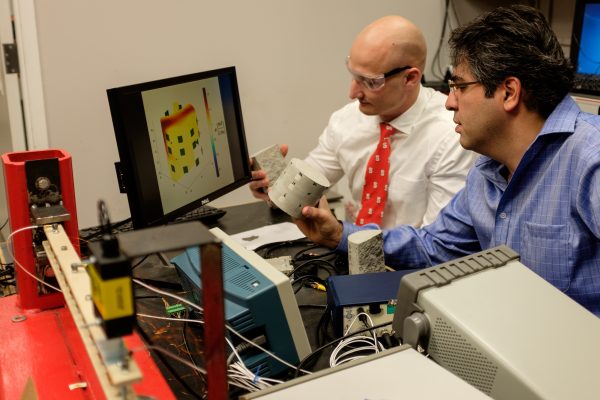
We develop advanced analytical, computational, and experimental methods for quantitative imaging of concrete and other porous materials. We use Electrical Impedance Tomography (EIT) to visualize damage and moisture flow within these materials.
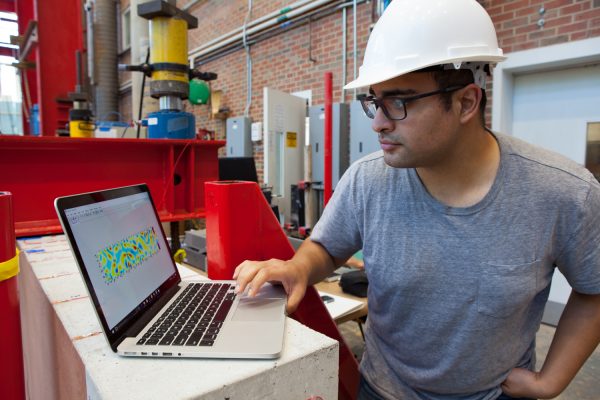
We develop computational and experimental methods for quantitative damage detection in large structural components.
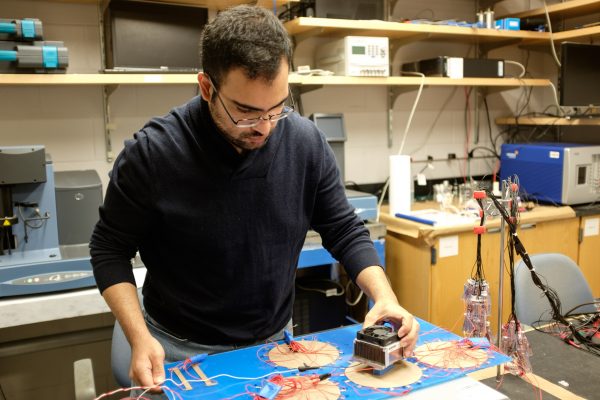
We develop and test functionally layered large-area sensors, called sensing skin, for structural health monitoring. Sensing skin has many applications in continuous monitoring of critical building components, oil and gas pressure vessels, storage tanks, nuclear containment and waste storage facilities, aeronautic structures, and military and defense structures.
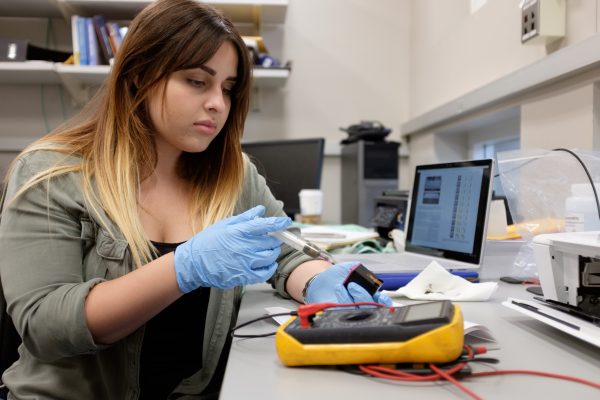
We development new methods and materials for printing sensors in our laboratories. Printing sensors allows us to design them for complex structural shapes.
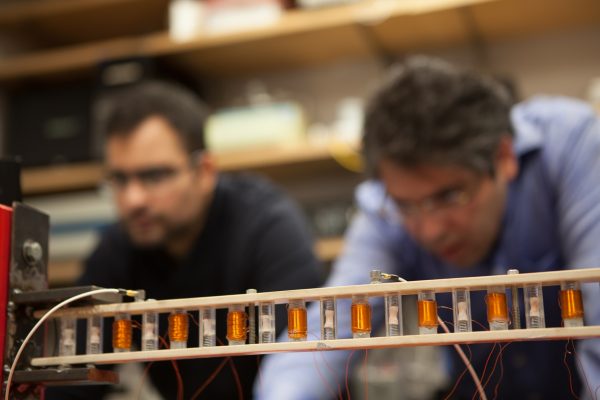
We develop metamaterials for vibration control and energy harvesting and experimentally characterize their response.
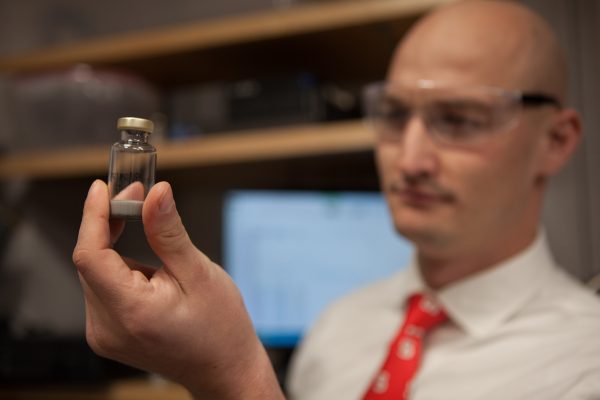
We study physical and chemical properties of cementitious materials using advanced analytical techniques such as calorimetry and thermal analysis.
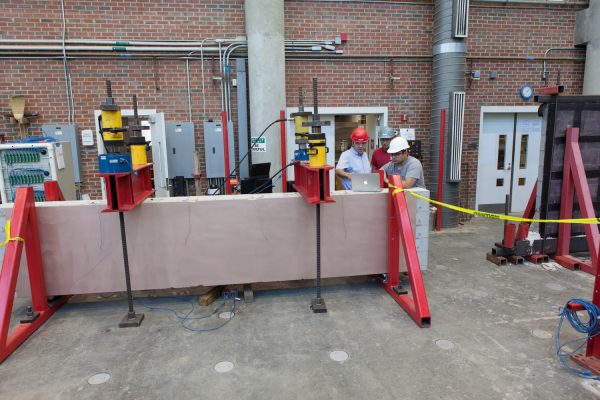
We develop truly large area sensors (sensing skins) and instrument large-scale structural components with it. This photograph shows a full size beam instrumented with sensing skin that we have tested.
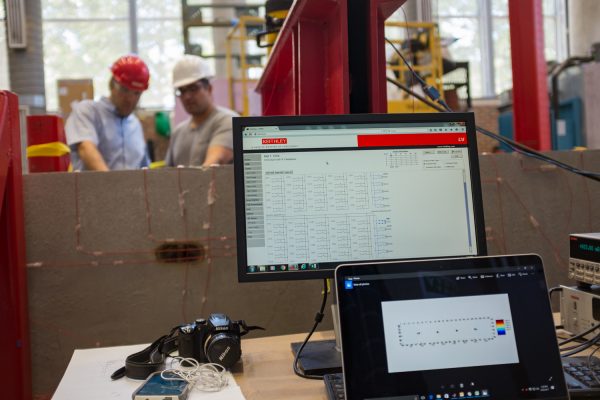
We develop experimental and measurement techniques for sensing and structural health monitoring.
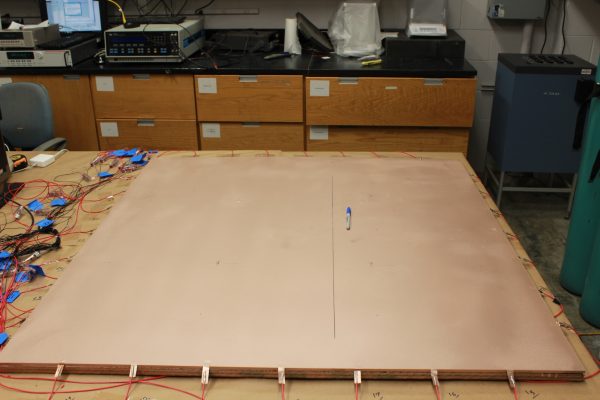
We develop truly large area sensors (sensing skins) for crack detection. This photograph shows a 5 x 5 ft sensing skin that is applied to Fiber Reinforced Polymer (FRP) sheet.

We study material processing methods for cementitious materials with goal of engineering materials for real field applications.
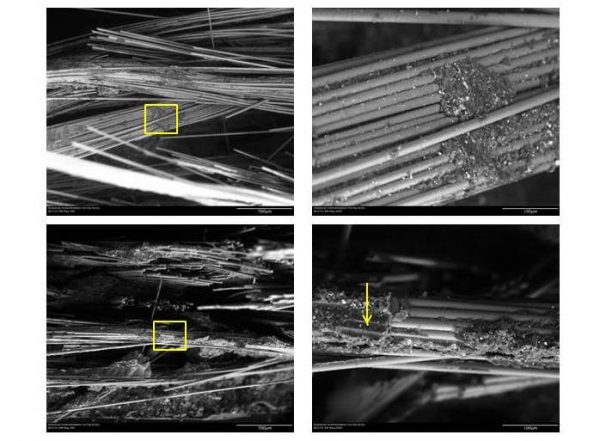
We study failure mechanisms of Fiber Reinforced Polymer (FRP) composites under simultaneous exposure to environmental and mechanical loading.
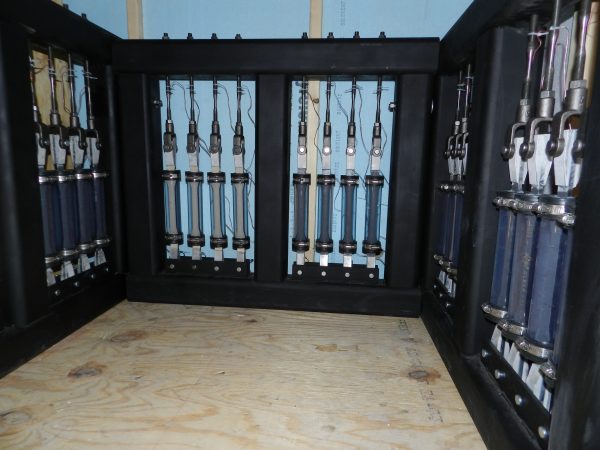
We study the long-term durability of Fiber Reinforced Polymer (FRP) composites. Specifically we try to understand the effects of simultaneous exposure to environmental and mechanical loading.
